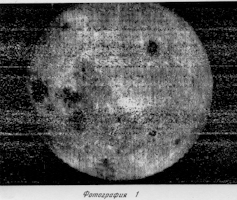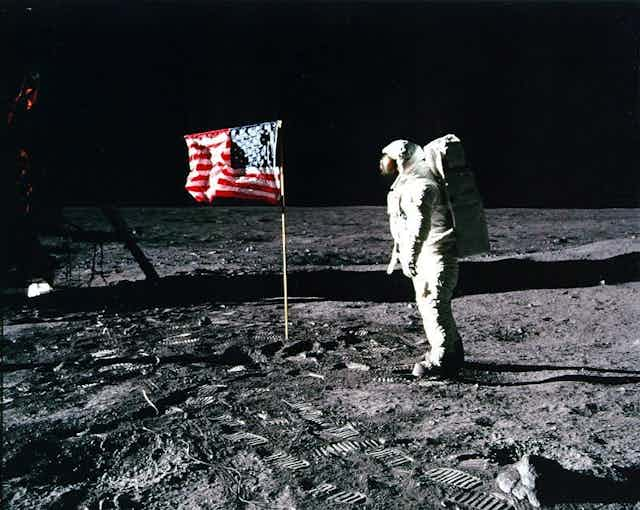Like all relationships, our association with the moon has had its ups and downs.
In this series we’ve talked about the nature of the satellite and how we think it was formed - in a giant collision that tore Earth asunder.
We’ve seen how the moon interacts with Earth, raising tides as it gradually recedes into space. And we’ve been through some of the ways that the moon may have helped to shape life on Earth.
But what about human interaction with the moon - past, present and future? That’s the topic of this final article on our nearest neighbour.
Moon exploration
Since we first looked at the sky, the moon has played a prominent role in our stories and mythology.

It’s only natural that, once humans learnt how to escape Earth’s gravitational pull, the moon would be the first place we’d visit. Stories of trips to the moon date back at least 2,000 years.
The first successful mission to the moon was the Russian spacecraft, Luna 2, which crashed into the moon on September 14, 1959 - less than two years after the launch of Sputnik 1, Earth’s first artificial satellite.
Less than a month later, the Soviets launched Luna 3, which returned the first images of the far side of the moon, revealing that the two sides of our satellite look hugely different: something current theories of lunar formation are still striving to explain.
Of course, this being the Cold War, the Americans were not to be outdone, and in May 1961 John F. Kennedy committed the US to the space race, with the promise of:
Before this decade is out, landing a man on the moon and returning him safely to the Earth.
The mid-1960s to mid-1970s marked a golden age in lunar exploration. The first probe to soft-land on the moon (the Russian Luna 9 in February 1966) was quickly followed by the first lunar orbiter (Luna 10, April 1966).
The first men to orbit the moon, the crew of Apollo 8 (Frank Borman, James Lovell and William Anders), entered lunar orbit on Christmas Eve, 1968, and set the stage for what remains one of mankind’s greatest achievements - on July 20 1969, man first walked on the moon.
The Apollo 11 mission, crewed by Neil Armstrong, Buzz Aldrin and Michael Collins (who remained on board the lunar orbiter while Armstrong and Aldrin got to walk on the surface) was a worldwide sensation.
Around the planet, people watched as, for a couple of hours, Armstrong and Aldrin explored the lunar surface, planting the US flag, gathering rocks and soil samples, and bounding around like kangaroos in the low gravity.
Five more Apollo missions (Apollo 12, 14, 15, 16 and 17) carried men to the moon.
Apollo 13 almost went catastrophically wrong, and later became the subject of a Hollywood blockbuster, but after 1972, things stopped.
When Eugene Cernan stepped back into the lunar lander on December 14 1972, he said:
I’m on the surface; and, as I take man’s last step from the surface, back home for some time to come — but we believe not too long into the future — I’d like to just [say] what I believe history will record. That America’s challenge of today has forged man’s destiny of tomorrow. And, as we leave the moon at Taurus-Littrow, we leave as we came and, God willing, as we shall return: with peace and hope for all mankind. Godspeed the crew of Apollo 17.
I doubt anyone would have expected that, more than 40 years later, we would not have returned.
Modern and future moon exploration
In the past two decades, lunar exploration has begun anew, with Japan, the European Space Agency, China and India joining the US and Russia as nations to have explored our satellite - albeit with unmanned probes rather than human explorers.
These lunar orbiters continue to make exciting discoveries about our nearest neighbour - including the presence of water ice on the lunar surface. They have mapped the moon’s gravity, allowing the structure and composition of the moon to be studied in great depth. They have even obtained images showing the Apollo landing sites.

Much of the current exploration of the moon is focused on the idea it might be possible, one day, to return, and perhaps even mine there for precious resources such as Helium-3, which is incredibly rare on Earth, but thought to be much more common in the lunar regolith as a result of its continuous bombardment by the solar wind.
To that end, the Chinese lunar lander and rover mission Chang'e 3 is currently scheduled for launch late this year. If successful, it will be the first time we have successfully made a soft landing on the moon’s surface since Luna 24 in 1976.
Further in the future, it is almost certain that we will return to the moon - whether to mine the surface, or perhaps just as tourists.
After all, it would be a tragedy if Eugene Cernan’s excursion on the lunar surface back in 1972 was to remain our last steps on another world.
This is the fifth and final part of our series on the moon. To read the other instalments, follow the links below:
Part One: I see the moon: introducing our nearest neighbour
Part Two: Crash – a-ah! Our moon has a history of violence
Part Three: Out on the pull: why the moon always shows its face
Part Four: With or without you: the role of the moon on life

